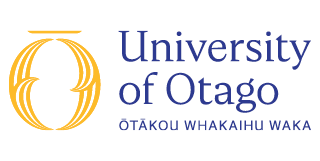Overview
An introduction to the structure and function of the musculoskeletal, nervous, endocrine and immune systems in the human body, and to biostatistics.
We all take for granted that our body functions under so many different conditions whether we are sitting at a desk, playing sport, eating or resting. In HUBS 191 you will have the opportunity to develop conceptual learning skills about the structure (Anatomy) and function (Physiology) of your body and how these systems work under different conditions. Modules include movement and the nervous system (Human Movement and Sensation), hormones (Endocrine system) and response to injury (Immune System) and the use of biostatistics to enhance our scientific understanding of the human body. The paper integrates this material to help you understand how and why our bodies are such amazingly efficient machines.
About this paper
| Paper title | Human Body Systems 1 |
|---|---|
| Subject | Human Body Systems |
| EFTS | 0.15 |
| Points | 18 points |
| Teaching period | Semester 1 (On campus) |
| Domestic Tuition Fees ( NZD ) | $1,173.30 |
| International Tuition Fees | Tuition Fees for international students are elsewhere on this website. |
- Restriction
- ANAT 101, ANAT 120, PHSE 191, PHSL 101, PTWY 131
- Schedule C
- Science
- Eligibility
- Essential for Health Sciences First Year; BSc majors in Anatomy, Physiology, Neuroscience, Human Nutrition and Microbiology; and BBiomedSc majors in Functional Human Biology, Infection and Immunity, Reproduction, Genetics and Development, Molecular Basis of Health and Disease, Drugs and Human Health and Nutrition and Metabolism in Human Health.
- Contact
- Course Administrator: Mr Philip Kelly Professional Practice Fellow
- Teaching staff
Academic Course Convenor: Associate Professor Jeff Erickson
Lecturers include:Dr Rebecca Bird
Dr Charlotte King
Dr Tanya Cully
Associate Professor Robin Turner
Professor Christine Jasoni
Associate Professor Phil Sheard
Abigail Walker
Associate Professor Joanna Kirman
Professor Alexander McLellan- Paper Structure
- Teaching Arrangements
You will attend three lectures each week. Lectures are also video streamed and recorded. You will participate in a 3-hour laboratory session on alternate weeks.
- Textbooks
Required: Martini, Ober, Nath, Bartholomew, Petti (2018). Visual Anatomy and Physiology and Martini’s Atlas of the Human Body. 3rd Edn, Pearson.
- Graduate Attributes Emphasised
- Global perpective, Interdisciplinary perspective, Lifelong learning, Scholarship, Communication, Critical thinking, Cultural understanding, Ethics, Environmental literacy, Information literacy, Research, Self-motivation, Teamwork.
View more information about Otago's graduate attributes. - Learning Outcomes
Successfully completing HUBS 191 gives you the essential building blocks of knowledge of the anatomy and physiology of the human body. This knowledge will underpin your further study in a wide range of Health Science disciplines. These include both Bachelor of Science (BSc) and biomedical science (BBiomedSc) majors and minors. HUBS 191 is part of the Health Sciences First Year programme required for access to a range of Professional Health Science qualifications.
